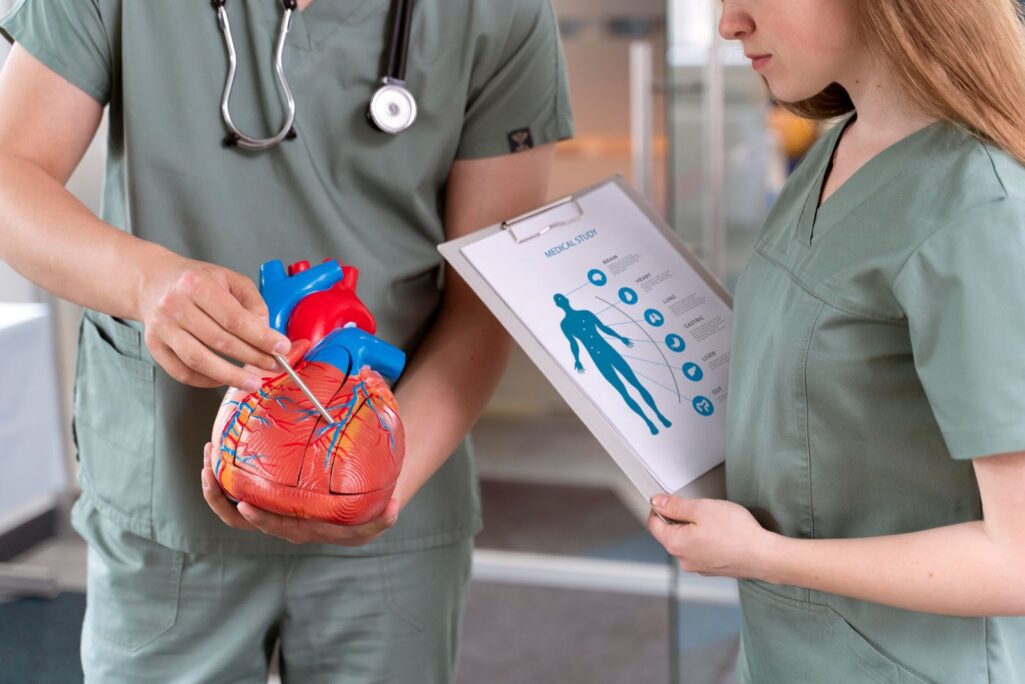If you’re fascinated by the heart and lungs, and driven to contribute to a patient’s journey towards recovery, then becoming a physician assistant (PA) specializing in cardiovascular and thoracic surgery could be the perfect fit for you. This path combines the in-depth knowledge of medicine with the practical skills of surgical care, offering a fulfilling career with a significant impact.
This article will guide you through the essential steps to take to become a PA specializing in this exciting field. We’ll explore the educational foundation, certification process, and valuable experience you’ll need to thrive in this rewarding specialty.
Pivotal Role and Duties of a Cardiothoracic Surgical Physician Assistant
Physician Assistants (PAs) working in the cardiothoracic surgery domain cater to highly specific demands of the surgeons they assist. They bring a unique blend of specialized knowledge and familiarity with the operating surgeon to the table, which leads to smoother surgical procedures. Their expertise plays a critical role in reducing patient mortality and morbidity and fostering an environment of collaboration with the surgeon.
PAs are involved in a multitude of tasks during cardiothoracic procedures, which include but are not limited to:
- Gathering comprehensive patient histories and conducting thorough physical examinations;
- Conducting daily rounds that include writing up discharge summaries and imparting patient education;
- Performing a variety of invasive procedures; let’s discuss these in more detail:
- Thoracentesis: This procedure involves the removal of fluid from the space between the lungs and the chest wall, known as the pleural space;
- Chest tube insertions: These are essential to drain fluid, blood or air from the pleural space;
- Placement of central venous and dialysis catheters: These are used to administer medications and other treatments and perform dialysis;
- Placement of arterial lines and intra-aortic balloon pumps: These assist in monitoring blood pressure and supporting the heart, respectively;
- Retrieval of vascular tissues for use as a bypass conduit: This is integral to several bypass surgeries;
- Endoscopic retrieval: This minimally invasive procedure involves the extraction of tissues or organs.
Working closely with surgeons, PAs in this field are an integral part of the cardiothoracic surgical team, ensuring that every patient receives the best possible care. The extensive training and unique skill sets they possess make them invaluable in this complex and demanding field of medicine.
Comprehensive Role of Cardiothoracic Physician Assistants: From Pre-Op to Recovery
Cardiothoracic physician assistants bear the weighty responsibility of caring for patients at every stage of the surgical process — before, during, and after the operation.
Pre-Surgery Involvement
Before surgery, these professionals serve as the crucial link between the patient and the surgeon. They provide a thorough explanation of the upcoming procedure to the patient and their family, taking care to answer any questions and alleviate anxieties. They also conduct routine pre-operative tests to ensure patients are fully prepared for the operation.
Assistance During Surgery
On the day of the operation, they play an instrumental role in assisting the surgeon. Their tasks can range from placing IV lines to drawing blood to aid in tracking patients’ health. They act as the surgeon’s second pair of hands, bringing their extensive training and experience to bear to ensure that the operation proceeds smoothly.
Post-Surgery Care
Post-operation, cardiothoracic physician assistants become the critical guardian of patients’ recovery. Their tasks include monitoring the patient’s recovery progress, ordering and reviewing lab tests, and promptly addressing any complications or issues with the surgeon. They often oversee the patient’s discharge process, ensuring that the patient fully understands their discharge instructions, follow-up care, and any prescribed medications.
In addition, they might also provide the following post-operative care:
- Pain management: Ensuring patients are comfortable and pain is minimized;
- Nutrition advice: Counseling patients on appropriate dietary changes post-surgery;
- Exercise guidelines: Offering guidance on safe physical activities to aid recovery;
- Mental health support: Providing resources or referrals for psychological help if necessary.
Through their wide range of responsibilities, cardiothoracic physician assistants have a profound impact on patients’ surgical experiences, their recoveries, and ultimately their health outcomes. Their role cannot be overemphasized in the oftentimes complex and challenging world of cardiothoracic surgery.
The Pathway to Becoming a Cardiovascular and Thoracic Surgery Physician Assistant (PA)
A career as a Cardiovascular and Thoracic Surgery Physician Assistant is rewarding, but it requires dedication, rigorous study, and extensive practice. This guide provides an overview of the steps to becoming a specialized PA in this field.
Acquiring Necessary Education
Firstly, prospective PAs need to earn a master’s degree from a Physician Assistant program accredited by the Accreditation Review Commission on Education for the Physician Assistant (ARC-PA). Typically, these programs last for about 26 months and mandate applicants to hold a bachelor’s degree, with specific emphasis on foundational science courses like biology, chemistry, and anatomy. Some academic establishments offer combined programs, allowing students to acquire both undergraduate and master’s degrees through an integrated approach.
Undergoing Clinical Training
Subsequent to classroom study, students undertake around 2,000 hours of clinical rotations across various medical specialties. This includes general surgery, emergency medicine, and internal medicine. This hands-on experience equips the prospective PAs with critical real-world exposure, preparing them for the demands of their future career.
Certification and Licensure
Upon successful completion of the PA program, graduates must pass the Physician Assistant National Certifying Examination (PANCE) to become certified PAs. The next step involves obtaining a state license, the requirements for which may vary from state to state.
Post-Graduate Residency
Fresh graduates often opt for a post-graduate program specializing in cardiothoracic surgery for further refining their skills. These paid residencies typically last around a year, offering an intensive, focused training in the cardiothoracic surgery field. Alternatively, some cardiothoracic surgeons might hire new graduates, providing personal mentorship and training.
Continual Learning
Once their formal education and training are complete, PAs should remain committed to continuous learning. Medical techniques and technologies are constantly evolving, and staying up-to-date is crucial for providing the best patient care.
With dedication, diligence, and continued professional development, a Physician Assistant can excel in the specialized field of Cardiovascular and Thoracic Surgery, contributing significantly to patient wellness and surgical success.
An Overview of the Skills Acquired by Cardiovascular and Thoracic Surgery Physician Assistants
Physician Assistants (PAs) certified in the field of Cardiothoracic Surgery gain expertise in a wide range of responsibilities. They play a vital role in the entire surgical journey – from preparation to recovery. The Society for Thoracic Surgeons, a premier professional organization in this medical field, endorses the involvement of PAs in Cardiovascular and Thoracic Surgery, underlining the crucial role they play in enhancing the patient’s care and surgical outcomes.

Proficiency in Surgical Assistance
One of the key skills of these specialized medical professionals involves direct surgical assistance. These tasks range from obtaining conduits for coronary artery bypass surgery to functioning as the primary assistant during the surgical procedure. They also demonstrate technical proficiency in performing critical tasks such as:
- Placement of arterial lines;
- Insertion of central lines;
- Placement of Swan Ganz catheters.
Specialization in Specific Procedures
These PAs are trained in performing specific procedures, such as thoracentesis, which involves withdrawing fluid from around the lungs for diagnostic or therapeutic purposes. They are also adept at inserting and removing intra-aortic balloons, devices used to enhance heart function, and placing and removing chest tubes, which are vital to patient recovery post-surgery. Also, explore the dynamic world of PA salaries in NY, uncovering trends, challenges, and opportunities for professionals in the healthcare industry.
Excellence in Pre- and Postoperative Care
Much of a patient’s success hinges on quality pre- and postoperative care. PAs in this field are instrumental in ensuring patients are well-prepared for their surgical experience and that they receive excellent care following the surgery. This includes education about the upcoming procedure, monitoring the patient’s recovery, and providing instructions for post-discharge care.
All these skills are developed through specialized post-graduate programs offered by educational institutions or private practices, ensuring that PAs in Cardiovascular and Thoracic Surgery are equipped with the tools needed to excel in this demanding and highly specialized field.
Enhancing Credibility: The Process of Achieving Cardiovascular and Thoracic Surgery CAQ
Physician Assistants (PAs) who have accumulated considerable experience in the field of Cardiothoracic Surgery often aspire to gain professional recognition to enhance their credibility. One widely-acknowledged path to such recognition is the Certificate of Added Qualifications (CAQ) program offered by the National Commission on Certification of Physician Assistants (NCCPA) specifically for Cardiovascular and Thoracic Surgery.
Earning a CAQ in Cardiovascular and Thoracic Surgery not only adds a feather in the cap of the PA but also signifies their enhanced competence, dedication, and commitment to the field. To achieve this prestigious qualification, there are several prerequisites:
- Certification: The aspirant must hold active PA-C (Certified Physician Assistant) status;
- Licensure: They must possess a valid and current PA license in at least one jurisdiction in the U.S;
- Experience: A minimum of two years of full-time experience within the last six years as a practicing PA in Cardiovascular and Thoracic Surgery is required;
- Continuing Medical Education (CME): Candidates must demonstrate their continuing professional development by possessing at least 150 credits of Category I CME focused specifically on Cardiovascular and Thoracic Surgery;
- Specialty Exam: Passing a specialty exam that tests the applicant’s knowledge and understanding of the field is another requirement;
- Attestation: Finally, a submission of attestation by a physician who can vouch for the PA’s hands-on experience and proficiency in managing patient care relevant to Cardiothoracic Surgery is required.
Conclusion
Embarking on a professional journey as a physician assistant with a focus on cardiovascular and thoracic surgery presents a remarkable chance to make a direct and profound difference in the lives of patients grappling with intricate heart and lung ailments. Although this path necessitates unwavering commitment and concentration, armed with adequate preparation and hands-on expertise, one can evolve into an indispensable asset within the realm of cardiothoracic surgery. By adhering to the guidelines elucidated in this piece, individuals can initiate their journey towards a fulfilling career dedicated to assisting patients in achieving improved breathing and overall well-being.




